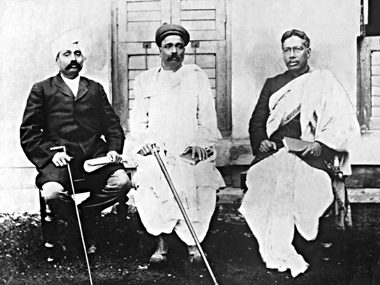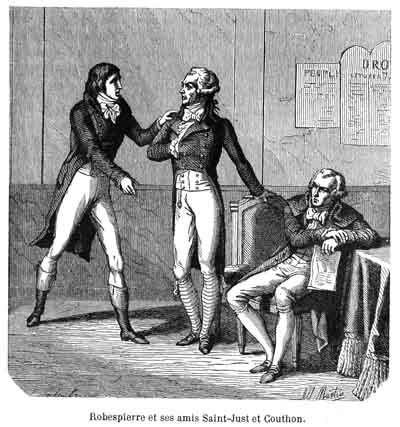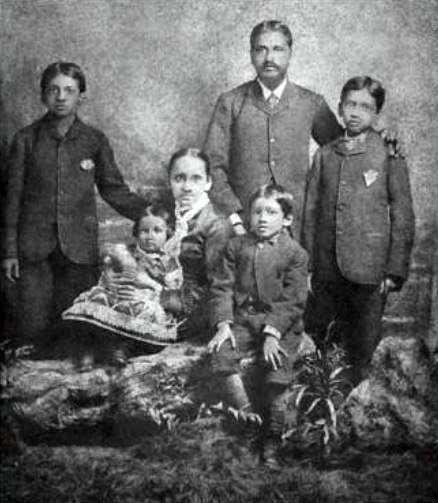|
Lal-Bal-Pal
Lal Bal Pal (Lala Lajpat Rai, Bal Gangadhar Tilak, and Bipin Chandra Pal) were a triumvirate of assertive nationalists in British India in the early 20th century, from 1906 to 1918. They advocated the Swadeshi movement involving the boycott of all imported items and the use of Indian-made goods in 1907 during the anti-Partition agitation in Bengal which began in 1905. They were also known as the "Radicals of The Indian Independence Movement". The final years of the nineteenth century saw a radical sensibility emerge among some Indian intellectuals. This position burst onto the national all-India scene in 1905 with the Swadeshi movement - the term is usually rendered as "self reliance" or "self sufficiency".Erez Manela, The Wilsonian moment: self-determination and the international origins of anticolonial nationalism, Published by Oxford University Press US, 2007, , Lal Bal Pal mobilised Indians across the country against the Bengal partition, and the demonstrations, strikes, ... [...More Info...] [...Related Items...] OR: [Wikipedia] [Google] [Baidu] |
Bal Gangadhar Tilak
Bal Gangadhar Tilak (; born Keshav Gangadhar Tilak (pronunciation: eʃəʋ ɡəŋɡaːd̪ʱəɾ ʈiɭək; 23 July 1856 – 1 August 1920), endeared as Lokmanya (IAST: ''Lokamānya''), was an Indian nationalist, teacher, and an independence activist. He was one third of the Lal Bal Pal triumvirate. The British colonial authorities called him "The father of the Indian unrest". He was also conferred with the title of " Lokmanya", which means "accepted by the people as their leader". Mahatma Gandhi called him "The Maker of Modern India". Tilak was one of the first and strongest advocates of Swaraj ('self-rule') and a strong radical in Indian consciousness. He is known for his quote in Marathi: "Swaraj is my birthright and I shall have it!". He formed a close alliance with many Indian National Congress leaders including Bipin Chandra Pal, Lala Lajpat Rai, Aurobindo Ghose, V. O. Chidambaram Pillai and Muhammad Ali Jinnah. Early life Keshav Gangadhar Tilak was born on 23 ... [...More Info...] [...Related Items...] OR: [Wikipedia] [Google] [Baidu] |
Bipin Chandra Pal
Bipin Chandra Pal ( ; 7 November 1858 – 20 May 1932) was an Indian nationalist, writer, orator, social reformer and freedom fighter. He was one third of the " Lal Bal Pal" triumvirate. He was one of the main architects of the Swadeshi movement. He is known as the Father of Revolutionary Thoughts in India. He also opposed the partition of Bengal by the British colonial government. Early life and background of Pal Bipin Chandra Pal was born on 7 November 1858 to a wealthy Bengali Kayastha family in the village of Pail in Habiganj, then part of the Bengal Presidency's Sylhet District. His father was Ramchandra Pal, a Persian scholar, and small landowner. His father subsequently joined the Sylhet bar as a lawyer. He studied and taught at the Church Mission Society College (now the St. Paul's Cathedral Mission College), an affiliated college of the University of Calcutta. He also studied comparative theology for a year (1899-1900) at New Manchester College, Oxford in Engla ... [...More Info...] [...Related Items...] OR: [Wikipedia] [Google] [Baidu] |
Triumvirate
A triumvirate () or a triarchy is a political institution ruled or dominated by three individuals, known as triumvirs (). The arrangement can be formal or informal. Though the three leaders in a triumvirate are notionally equal, the actual distribution of power may vary. The term can also be used to describe a state with three different military leaders who all claim to be the sole leader. Informally, the term "triumvirate" may be used for any association of three. Under the influence of the Soviet Union, the term troika (Russian: for "group of three") may be used for "triumvirate". Pre-modern triumvirates Biblical In the Bible, triumvirates occurred at some notable events in both the Hebrew Bible (Old Testament) and New Testament. In the Book of Exodus, Moses, his brother Aaron and their nephew or brother-in-law, Hur, acted this way during the Battle of Refidim against the Amalekites. Later in Exodus 24, when Moses was away on Mount Sinai, Aaron and Hur were left in ch ... [...More Info...] [...Related Items...] OR: [Wikipedia] [Google] [Baidu] |
Swadeshi Movement
The Swadeshi movement was a self-sufficiency movement that was part of the Indian independence movement and contributed to the development of Indian nationalism. Before the BML Government's decision for the partition of Bengal was made public in December 1903, there was a lot of growing discontentment among the Indians. In response the Swadeshi movement was formally started from Town Hall at Calcutta on 7 August 1905 to curb foreign goods by relying on domestic production. Mahatma Gandhi described it as the soul of swaraj (self-rule). The movement took its vast size and shape after rich Indians donated money and land dedicated to Khadi and Gramodyog societies which started cloth production in every household. It also included other village industries so as to make village self-sufficient and self-reliant. The Indian National Congress used this movement as arsenal for its freedom struggle and ultimately on 15 August 1947, a hand-spun Khadi tricolor Ashoka Chakra Indian flag wa ... [...More Info...] [...Related Items...] OR: [Wikipedia] [Google] [Baidu] |
Lal Bal Pal
Lal Bal Pal (Lala Lajpat Rai, Bal Gangadhar Tilak, and Bipin Chandra Pal) were a triumvirate of assertive nationalists in British India in the early 20th century, from 1906 to 1918. They advocated the Swadeshi movement involving the boycott of all imported items and the use of Indian-made goods in 1907 during the anti-Partition agitation in Bengal which began in 1905. They were also known as the "Radicals of The Indian Independence Movement". The final years of the nineteenth century saw a radical sensibility emerge among some Indian intellectuals. This position burst onto the national all-India scene in 1905 with the Swadeshi movement - the term is usually rendered as "self reliance" or "self sufficiency".Erez Manela, The Wilsonian moment: self-determination and the international origins of anticolonial nationalism, Published by Oxford University Press US, 2007, , Lal Bal Pal mobilised Indians across the country against the Bengal partition, and the demonstrations, strikes, ... [...More Info...] [...Related Items...] OR: [Wikipedia] [Google] [Baidu] |
Lala Lajpat Rai
Lala Lajpat Rai (28 January 1865 — 17 November 1928) was an Indian revolutionary, politician, and author, popularly known as ''Punjab Kesari (Lion of Punjab).'' He was one of the three members of the Lal Bal Pal trio. He died of severe trauma injuries sustained in October 1928 during a baton charge by police in Lahore, when he led a peaceful protest march against the all-British Simon Commission. Early life Lajpat Rai was born on 28 January 1865 into an Agrawal Jain family as the eldest son of six children of Munshi Radha Krishna, an Urdu and Persian government school teacher and Gulab Devi Aggarwal at Dhudike in the Faridkot district of the Punjab Province of British India (now in Moga district, Punjab, India). He spent much of his youth in Jagraon. His house still stands in Jagraon and houses a library and museum. He also built the first educational institute R.K. High school in Jagraon. Education Lajpat Rai had his initial education in Government Higher Seco ... [...More Info...] [...Related Items...] OR: [Wikipedia] [Google] [Baidu] |
British Raj
The British Raj ( ; from Hindustani language, Hindustani , 'reign', 'rule' or 'government') was the colonial rule of the British The Crown, Crown on the Indian subcontinent, * * lasting from 1858 to 1947. * * It is also called Crown rule in India, * * * * or direct rule in India. * Quote: "Mill, who was himself employed by the British East India company from the age of seventeen until the British government assumed direct rule over India in 1858." * * The region under British control was commonly called India in contemporaneous usage and included areas directly administered by the United Kingdom of Great Britain and Ireland, United Kingdom, which were collectively called ''Presidencies and provinces of British India, British India'', and areas ruled by indigenous rulers, but under British British paramountcy, paramountcy, called the princely states. The region was sometimes called the Indian Empire, though not officially. As ''India'', it was a founding member of th ... [...More Info...] [...Related Items...] OR: [Wikipedia] [Google] [Baidu] |
Bengal Presidency
The Bengal Presidency, officially the Presidency of Fort William in Bengal until 1937, later the Bengal Province, was the largest of all three presidencies of British India during Company rule in India, Company rule and later a Provinces of India, Province of British India. At the height of its territorial jurisdiction, it covered large parts of what is now South Asia and Southeast Asia. Bengal proper covered the ethno-linguistic region of Bengal (present-day Bangladesh and the West Bengal, Indian state of West Bengal). Calcutta, the city which grew around Fort William, India, Fort William, was the capital of the Bengal Presidency. For many years, the governor of Bengal was concurrently the governor-general of India and Calcutta was the capital of India until 1911. The Bengal Presidency emerged from trading posts established in the Bengal Subah, Bengal province during the reign of Emperor Jahangir in 1612. The East India Company (EIC), a British Indian monopoly with a royal ... [...More Info...] [...Related Items...] OR: [Wikipedia] [Google] [Baidu] |
Government Of India
The Government of India (ISO 15919, ISO: Bhārata Sarakāra, legally the Union Government or Union of India or the Central Government) is the national authority of the Republic of India, located in South Asia, consisting of States and union territories of India, 36 states and union territories. The government is led by the president of India (currently ) who largely exercises the executive powers, and selects the Prime Minister of India, prime minister of India and other ministers for aid and advice. Government has been formed by the The prime minister and their senior ministers belong to the Union Council of Ministers, its executive decision-making committee being the Cabinet (government), cabinet. The government, seated in New Delhi, has three primary branches: the legislature, the executive and the judiciary, whose powers are vested in bicameral Parliament of India, Union Council of Ministers (headed by prime minister), and the Supreme Court of India respectively, with a p ... [...More Info...] [...Related Items...] OR: [Wikipedia] [Google] [Baidu] |
Partition Of Bengal (1905)
The Partition of Bengal in 1905, also known as the First Partition of Bengal, was a territorial reorganization of the Bengal Presidency implemented by the authorities of the British Raj. The reorganization separated the largely Muslim eastern areas from the largely Hindu western areas. Announced on 16 October 1905 by George Nathaniel Curzon, 1st Marquess Curzon of Kedleston, Lord Curzon, then Governor-General of India, Viceroy of India, and implemented West Bengal for Hindus and East Bengal for Muslims, it was undone a mere six years later. The Partition (politics), Partition was aimed for administration purposes but in fact is treated as divide and rule policy and further agitated people, who perceived that it was a deliberate attempt to divide the Bengal Presidency on religious grounds, with a Muslim majority in the east and a Hindu majority in the west, thereby weakening the nationalist cause. The Hindus of West Bengal, who dominated Bengal's business and rural life, compla ... [...More Info...] [...Related Items...] OR: [Wikipedia] [Google] [Baidu] |
Aurobindo Ghosh
Sri Aurobindo (born Aurobindo Ghose; 15 August 1872 – 5 December 1950) was an Indian yogi, maharishi, and Indian nationalist. He also edited the newspaper ''Bande Mataram''. Aurobindo studied for the Indian Civil Service at King's College, in Cambridge, England. After returning to India, he took up various civil service works under the Maharaja of the princely state of Baroda. He became increasingly involved in nationalist politics in the Indian National Congress and the nascent revolutionary movement in Bengal with the Anushilan Samiti. He was arrested in the aftermath of a number of bombings linked to his organization in a public trial where he faced charges of treason for Alipore Conspiracy and then released, after which he moved to Pondicherry and developed a spiritual practice he called Integral Yoga. He wrote ''The Life Divine'', which deals with the philosophical aspect of Integral Yoga and ''Synthesis of Yoga'', which deals with the principles and meth ... [...More Info...] [...Related Items...] OR: [Wikipedia] [Google] [Baidu] |
Superintendent (police)
Superintendent (Supt) is a rank in the British police and in most English-speaking Commonwealth nations. In many Commonwealth countries, the full version is superintendent of police (SP). The rank is also used in most British Overseas Territories, in many former British colonies, as well as in Portugal and in several former Portuguese colonies. In some countries, such as Italy, the rank of superintendent is a lower rank. Rank insignia of superintendent File:AFPSPR.png, alt=, File:Bangladesh Police SP Rank.svg, alt=, File:RCMP Superintendent.png, alt=, File:New Zealand Police OF-4a.svg, alt=, File:Superintendent of Police.png, alt=, File:Garda Superintendent.png, alt=, File:Vice Questore PS.png, File:Distintivo Superintendente CPSPM.png, File:SP pakistan 1.png, File:Distintivo Superintendente PSP.png, File:SPF-SO-SUPT.svg, File:경정.svg, alt=, File:Swedish-police-rank-04.svg, File:Supt.svg, alt=, File:Superintendent A (Cyprus Police).png, Superintendent ... [...More Info...] [...Related Items...] OR: [Wikipedia] [Google] [Baidu] |









